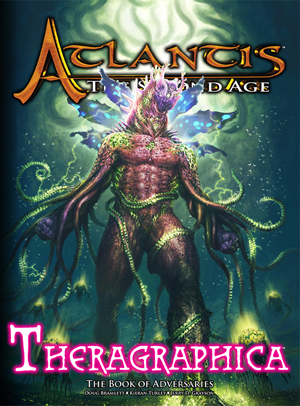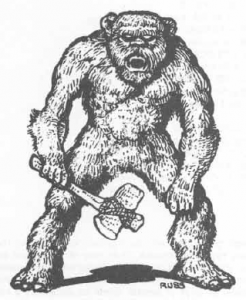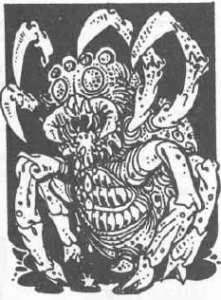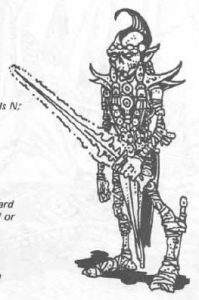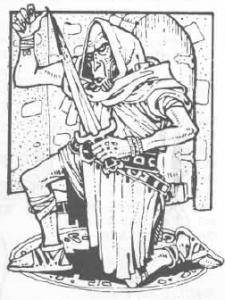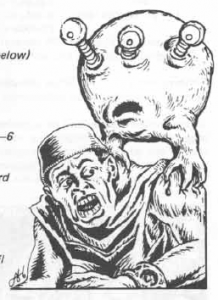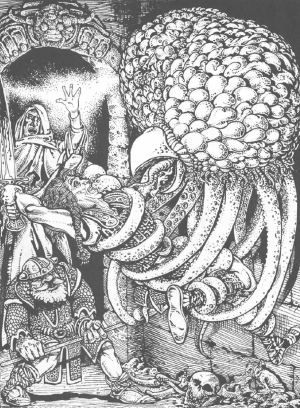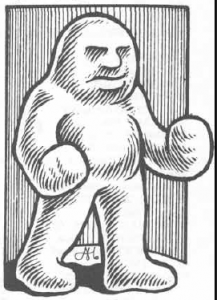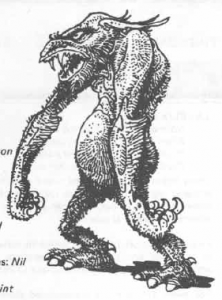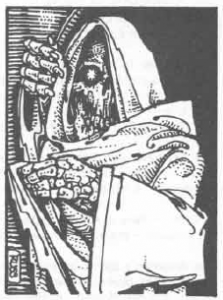The Creature Catalogue seems a rather strange monster book for Dungeons & Dragons at the first look. When I first saw it, it seemed even weirder than the Fiend Folio. During the 80s, there were to similar but also different games being published; one being called Advanced Dungeons & Dragons, the other just Dungeons & Dragons. The smaller, and less known line had no Player’s Handbook, Dungeon Master’s Guide, and Monster Manual, but instead came in five Box Sets named Basic, Expert, Companion, Master, and Immortal, and is now most usually called BECMI for that reason. (There is also an earlier edition called B/X, because it only had the Basic and Expert rules.) AD&D became much more popular and famous, because who would want to play a light version of a game if you can also have the hardcore rules version? Also, AD&D got Greyhawk, Forgotten Realms, and later Planescape, Dark Sun, and Ravenloft. The design teams for both product lines were almost completely separated and worked independent from each other, and their games developed in quite different directions. And the split happened very early back in 1978, only four years after the very first, and very bare bones edition of D&D had been released. When D&D 3rd edition came around (which really was the 8th edition of a game called D&D and we’re now at the 12th), it was based pretty much entirely on AD&D and went on where the 2nd Edition had left off.
The monsters that were created for BECMI went almost entirely ignored when there was once again only a single line of D&D books. The aranea made a few appearances, but never got a really big presence. While the nightwalker got a really cool picture in the 3rd ed. Monster Manual, it was just so incredibly powerful that I imagine it saw only very limited use. The atach and belker were put into the MM but to my knowledge never again, and the korpu made it into the MM2 with similar popularity. When you read the Fiend Folio, there are lots of weird monsters, but also a lot of well known and familiar monsters. The Creature Catalogue is a collection of most BECMI monsters that appeared in adventure modules and other supplements up to that date and I think none of them would be recognized by anyone who never played this particular line of D&D.
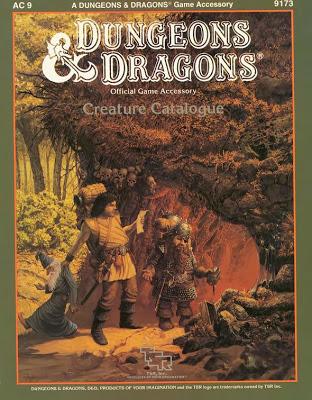
Creature Catalogue for Dungeons & Dragons (BECMI) by TSR, 1986; 63 pages of monsters.
Remember the Juggernaut from the 3rd ed. MM2? Some kind of massive tank/siege-tower golem on wheels? That one is in this book too. However, old fans of the game have told me that it really only appeared in a single adventure and was never used or mentioned anywhere else. Not sure what is the greater mystery: Why they put it into the CC in the first place, or why they later thought it was one of the best things in the book that needs to go into the MM2?
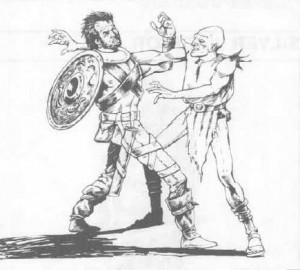
The Magen (majen?) looks like an ordinary human, but is indeed a magical and alchemical creation. As magical constructs they need no sleep, food, water, or even air to survive and they do not age either. While not great thinkers, they are amazingly intelligent for constructs and can function among humans without supervision by their master without any problems. Though they are not particularly powerful creatures, at least compared to golems, this makes them extremely useful and valuable. There are four different types of magen, which each have their own unique powers. The hypnos is using a permanent charm effect which should make them absolutely perfect for spying or kidnapping. All they have to do is ask and most guards and officials will be perfectly fine with doing anything asked of them. The demos is made for combat and can use use all weapons and armor. It usually is encountered in groups up to a dozen. A caldron can stretch its limbs to lengths of 6 meters and uses them to hold victims and kill them with acid that comes from their skin. The galvan is the strongest type and can use weapons and shot three lightning bolts per day. Magen are very expensive and difficult to make, so they are quite rare. When they are killed, the magic that animates them ends and they crumble into ash with a flash of flame, which might be the first indication that the PCs are not dealing with ordinary humans at all. The first idea I got was to use them as guards in some wizards castle that the PCs are supposed to quietly sneak into and then see how far they will have made it into the catacombs before they realize that none of the guards and servants they’ve sneaked past are humans but something entirely else and unnatural. I am sure there’s a lot of other cool things that could be done with them.
Also, remember the Belker? It’s in the 3rd ed. Monster Manual. That evil cloud of smole that attacks with two clawed hands. Another really lame thing that also comes from the Creature Catalogue. Should have stayed there. Continue reading “Fantasy Safari: Creature Catalogue (BECMI), Part 1”

